Racist Language within an SEMH Context
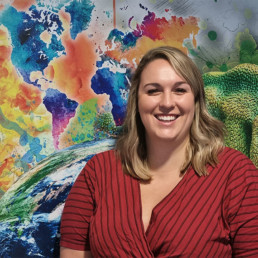
Written by Sophie Tales
Associate Assistant Principal for the Mead Educational Trust in Leicester. Sophie leads on Social, Emotional Mental Health, SEND Support and Development, Transition, Oracy, Team Teach and is chair for SENCo and Family Support Worker Networks.
What does it mean when students with SEMH show prejudice within a state of crisis? How can this be managed? How should this be tackled?
Within an SEMH context there are high staff to student ratios. Therefore, in the best of settings, there is very little behavior that goes unnoticed. This means that as staff you have a very insightful position within the lives of the SEMH students that are in your care and, therefore, have an opportunity to support students within any ounce of behavior that has been shown; positive or negative.
When it comes to times of crisis for students with SEMH, this can manifest in different ways. Behaviour that can be shown as an SEMH student reaches crisis: verbal abuse, physical abuse, controlling behavior, damage of property or self-harm.
Verbal abuse can often be part of an individual student’s behavior when they are in or reaching crisis. When an SEMH student is in crisis they are in ‘Fight, Flight. Freeze.’ Fight and flight are often seen within SEMH contexts. Verbal abuse is part of the ‘Fight’. Typically abuse that I personally get is “fat”, “bitch”, “slag”, “slut”; all very much to do with my body and being female. Within this state of crisis an SEMH student is in such a state of unrest that they are attempting to show you just how badly they are feeling; sometimes they want you to feel just as badly as they do – hence the abuse. What I, as a white woman, haven’t experienced is any abuse about the colour of my skin. However, what I wish to discuss within this piece of writing is that when working with students with SEMH, racist language may well be used as abuse towards anyone; regardless of the colour of their skin.
As with any SEMH context, the behavior policy of that setting is a fundamental part of the running of the school and provides a clear set of rules, as well as opportunities, for students to follow to be rewarded for positive behavior. Racism is a key part of the policy which outlines steps of action if a student shows racial prejudice. However, what I would argue is that all contexts, SEMH or not, alongside their behavior policy, equally need a defined focus within the setting’s curriculum where ‘racism’ is being taught; for SEMH students, especially those who are white, racism is a very hard concept to understand.
The importance of having a differentiated curriculum designed to discuss what race and racism is became increasingly apparent to me when dealing with a group of white students who were increasingly using racist language towards members of staff when they were reaching a state of crisis. It became increasingly apparent that this needed an individual approach as no form of sanction was helping them change their behavior. For instance, these students all hated working away from their main class group and this was the first part of the sanction for the racist words that they had used. In the past, working away from their main class group would help these particular students to understand what they had done wrong and to stop any repeat offenses. However, with this incident, it didn’t. The words these students were using became worse and, strangely, the targets of these racist words became more varied. These students started to use these words towards anyone who was around at their point of crisis. They were not directing these racist words towards any particular skin colour; they were saying them to anyone available – white or black. This change in word direction helped me to see the issue. These students were not showing their prejudice; they were using words that they knew offended and upset people, without having any real understanding of what they were talking about.
This is where I realised I had overlooked something. I had overlooked just how complex a social construct such as racism is for any child, let alone a student with SEMH. To be able to understand racism, you are not just having to teach how historically people of colour have been treated as inferior to white people – you have to help teach the impact of community, culture, religion and, above all else, empathy. This is not an easy endeavor for students who struggle with social understanding. Yet, once this has been identified, you can identify what needs to be broken down for those students to understand the impact of their words and behavior.
For the students I was working with they needed context. They needed to understand what the words they were using meant to the staff they were saying it to. This could not come from me. A white woman telling them how it made another person feel wasn’t enough context; they needed to hear it from the person they had said it to. Secondly, they needed to see what this meant in context. They needed to see the community of people that they were directly offending when using those words. Finally, they needed to be in that community, to see those faces, and to discuss, in front of the community they were offending, when out of crisis, and to feel the weight of the language they had used.
The above approach worked. These students no longer use racist language within a state of crisis; it has been put back into a box that they know is not to be touched; regardless of the level of distress they are feeling. This is not to say that I think they will never use these words in a state of crisis again; they most likely will. But what they have now is a foundation of understanding that can be used to remind them of who they are not to use such language. Most importantly, it helped everyone involved to see that these students were not prejudiced. They were not targeting race; they were seeing a way of hurting someone as a tool for communication, without an understanding of the historical and social weight of the words they were using.
The National Curriculum - What Needs to Change?
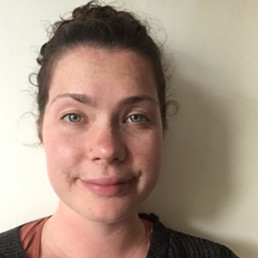
Written by Molly Burbridge
Molly is a teacher based in Greater Manchester, she founded AC in September 2020. She has a BA from Manchester University in American Studies.
Why is the national curriculum so limiting?
The national curriculum determines what is taught in our schools and colleges. It not only establishes who deserves to be celebrated in our country’s classrooms but also which students are represented. The content of our curriculum, the privileging of some forms of knowledge and aspects of lived experience over others and even pedagogical practices themselves serve to prioritise some voices and marginalise or silence others.
Even though educational establishments are required to abide by the Equality Act of 2010 our national curriculum does not reflect the nine protected characteristics equally. There is no requirement to learn about how institutionalised racism impacts our society; most authors of GCSE English texts are White heterosexual cisgender men; there is little scope for the celebration of the diverse array of cultures and identities that exist in our society. Even in PSHE, a subject that can be considered to have the most freedom to explore topics relating to the nine protected characteristics, is curtailed by DfE guidance limiting the external visitors that can support the delivery of a PSHE curriculum to disallow those, ‘promoting divisive or victim narratives that are harmful to British society’ (https://www.gov.uk/guidance/plan-your-relationships-sex-and-health-curriculum#using-external-agencies). This has been seen as an attempt to limit educators from teaching about activist groups such as Black Lives Matter and Extinction Rebellion (https://www.theguardian.com/education/2020/dec/15/education-department-to-review-schools-guidance-on-anti-capitalist-groups?__twitter_impression=true). It would be an impossible task to effectively teach about the nine protected characteristics of the Equality Act of 2010 without discussing the actions taken by marginalised groups to fight for equality however the DfE seem to be trying to prevent this.
Why does a representative curriculum matter?
Lack of representation or misrepresentation prevents society from progressing. When harmful, inaccurate or ignorant portrayals of groups of people exist in the media or cultural industries it leads to discrimination and harassment. If students don’t see themselves represented in topics they learn at school whether that be due to their race, gender identity, sexual orientation or disability then it becomes a barrier to achieving a sense of equality in schools. A lack of representation can also perpetuate existing inequalities that exist in society. Pupils who belong to groups that hold power in society are not given an opportunity to locate themselves within this position of power in society and are therefore not encouraged to consider how they benefit from it and what they can do to promote equality.
How we want to make a change!
Here at Alternative Curriculum, we want to widen the educational conversation and deepen an understanding of many subjects that are often airbrushed out of our national curriculum. We create free online resources that can be used by teachers in their classrooms, parents/carers as learning tools at home or young people as an opportunity to widen their cultural capital. Our aim is to amplify diverse voices and give young people the chance to learn about the varied histories, cultures and communities that have contributed to society. Our lessons focus on minority groups and those whose histories and cultures are not as thoroughly covered in the mainstream curriculum, with lessons on various topics within areas of history, science, media, literature, cultural studies and more. Example lessons so far include:
- ‘Pride’- KS1: https://www.alternativecurriculum.org/pride-3/
- ‘Racism, Inequality, Cultural Pride and Revolutionaries’- KS3: https://www.alternativecurriculum.org/racism-inequality-cultural-pride-revolutionaries/
- ‘The World’s Wife’- KS4: https://www.alternativecurriculum.org/the-worlds-wife/
- ‘Irish History’- KS5: https://www.alternativecurriculum.org/irish-history/
We have even started creating adult resources as it’s important that we continue to educate ourselves and continue the conversation around anti-discrimination and equality. Here are some examples of our adult resources:
- Disability Rights in the UK: https://www.alternativecurriculum.org/disability-rights-in-the-uk-2/
- Kill the Bill: https://www.alternativecurriculum.org/kill-the-bill/
- Non-Binary Identities: https://www.alternativecurriculum.org/non-binary-identities/
As conversations around the creation of a diverse and representative curriculum continue we hope that it is prioritised in classrooms across the country. Until then we will keep creating resources that amplify and celebrate unheard voices and change the narrative or our national curriculum.
Diversification - More Than an Educational Token
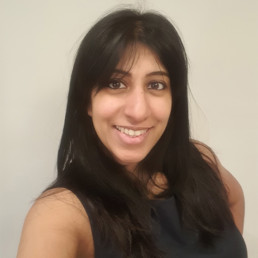
Written by Bhamika Bhudia
English teacher and lead teacher in a mixed comprehensive secondary school in North-West London. She tweets as MissMika_Eng
Diversity is a bit of a buzzword lately and a loaded one. Everywhere you look, it is in company policies, featured in plots of television shows and floating around our classrooms and curricula. However, despite its crucial need for focus and acknowledgement, the form we see of it is connoted with guilt, shaming and ultra-wokeness: the next big thing everyone needs to be talking about and be seen giving a nod to.
While terms like “diversity-hire” and “ticking boxes” are thrown around, what often goes amiss is the importance of representation and in more than just a tokenistic manner. Penguin recently published findings showing that, “Less than 1% of GCSE students in England study a book by a writer of colour, and only 7% study a book by a woman. This despite 34.4% of school age children identifying as Black, Asian and minority ethic.”
So many of our students do not see or hear themselves in the stories we tell them. So when “diversifying the curriculum” may be portrayed as the next big edu-fad, the damage of not doing this can last lifetimes. And with much of the media painting stereotypical and negative portrayals of anyone who is not white English, it is all the more damaging.
I am an Indian woman in my thirties; I spent my teens seeing most of the women from my genepool as submissive, perfectly poised opportunities for an arranged marriage plotline or a submissive daughter who just wanted some autonomy over her own life or career, should she have the audacity to want one. Who I am could not be further from this stereotype and having these very limited and hazy reflections of myself as a British-Indian woman, led me to experience conflict with a culture that I am in actual fact, incredibly proud of. But as much as this affected my youth and shaping of my identity, I can at least say that it has evolved. Archie Panjabi has gone from playing the daughter oppressed by her ethnic brand of patriarchy in the noughties to a no-nonsense, lawyer or motorcycle-riding, pathologist; Priyanka Chopra from a Miss-World-winning, exotic Bollywood beauty to a conflicted, sexually-empowered, complicated FBI agent; and of course, we have Malala and everything that she is and has done.
While I’m not for a second saying all of the issues with the representation of the Asian females have been fixed, I am acknowledging that progress has been made as it has with many other minorities and women in general. However, this is not the case across the board.
A classic example is the South-Asian male. Everywhere we see him, the Asian man is an awkward, socially inept, sexually-repressed individual whose role is no more than to drive a taxi, serve behind a shop counter or be the butt of jokes at a “funny accent” or his inability to communicate with women! The criminalisation of the black man still stands prominent over any suave and sophisticated depictions we have of him – and please can we take a real look at the dangerous and discriminatory portrayal of muslims on our silver screens?!
These one-dimensional and offensive reflections of the very students we teach will take heed on how they see themselves. They are essentially telling whole demographics that they are sexually undesirable, expected to show no confidence and be laughed at; or mistrusted, feared and hated. And they will all lead to one of three things: abandonment or dilution of their own culture; appropriation of another culture or the complete marginalization of groups of people from the British values we are told to uphold professionally, as part of our teacher standards!
How we see ourselves in the world around us is important so while western society and the wider media may be failing, we as teachers have the opportunities to tell our kids that they are not invisible, they are real and they are important. So the next time you feel the term “diversification of the curriculum” is being treated as the next temporary fixture as so many things in education are, think about the stories that may be told about the kids in your classroom and the power they can have. We have the opportunity to change the narrative and give our kids a voice that truly resonates with them – an opportunity that should not be missed!
Reflections on Improving Diversity and Inclusion in Science Teaching
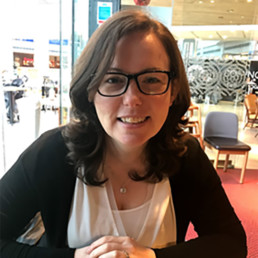
Written by Suzanne Wood
Chemistry teacher in an all girls school in London.
“Think of a scientist… imagine that scientist in your mind, imagine what they look like, what they do at work, the clothes they wear…. Now imagine them at home with their family, think about what their family looks like.”
I often start my year 7 and 8 classes with this exercise at the very beginning of the year. I ask them to draw a picture of the scientist and their family. Around 95% of them draw an old, white man with slightly fuzzy hair wearing a lab coat, his wife and their two children. It is always clear that the prevailing idea of scientists as straight, white men is still dominant in today’s society.
Looking at the numbers working in science careers, it is easy to see why. Despite there being over a million women working in science technology, engineering and maths (STEM) careers, this still represents only 24% of the work force1. More worryingly, black students represent only 6.2% of university entries on STEM courses2 and LGBT+ people are 20% less represented in STEM fields than expected3. The number of people with a known disability working in STEM subjects is far lower than those working in non STEM fields4. Yet, there remains a well documented skills shortage in this industry, costing around £1.5billion per year, coupled with a continued growth in jobs year on year5. It is clear therefore that the argument for the improved representation amongst minority groups in science is not just a moral one but also an economic one.
Discourse on diversifying the school curriculum frequently suggests that this is significantly more challenging for science or maths compared with English, history or the arts6. But as we know, you can’t be what you can’t see, and with this in mind, I personally took on the challenge of leading the science department to decolonise and diversify our curriculum. My aim was to reflect back to our students a vision of science that included them and their many and varied individualities. My project was ambitious, I created diversity resources for all three sciences across key stages 3 and 4 for each unit of learning. These were integrated into the existing curriculum for teachers to use. Examples include challenging our year 7’s perspective of families by exposing them to diverse ways of having children when studying reproduction, or introducing year 8 to Stephanie Kwolek, the woman who invented Kevlar when studying materials. We explore why female only pairings are beneficial to some species in GCSE Biology and the inequalities that exist as a result of climate change in GCSE Chemistry along the work of Stephen Hawking in GCSE Physics. We celebrate black history month in science with year 7 & 8 by looking at the life and contribution of Henrietta Lack’s HeLa Cells and in year 12 Chemistry and Biology we discover how the first HIV drugs were designed during LGBT+ history month. I found, when you scratch the scientific surface and get creative, you can quite easily find rich and varied examples of diversity and inclusion.
An added layer to this project was my realisation that we needed a significant and sustained culture shift within the department to put diversity and inclusion into the forefront of our teaching and learning strategy. I worked with teachers to help them understand the importance of their role in this by inviting them to attend a whole school CPD session that I ran on supporting LGBT+ students and why this was essential in terms of student wellbeing. I worked with the department to evolve the learning environment and make it more inclusive. Our science class names were changed to reflect a diverse group of scientists and time was built into our teaching schedules for diversity to be celebrated. These changes have had a significant impact on teachers and our students. A recent staff survey demonstrated that 100% of the respondents felt that diversity and inclusion is an important aspect of their teaching role and most teachers (90%) feel confident delivering this within the department. Student surveys have also revealed that pupils enjoyed learning about diverse science and that they saw this as an important aspect of their science education. Since these changes, staff have told me that students seem more at ease with starting conversations with them that have diversity and inclusion at their core and I see this as a positive outcome. Personally, the biggest change for me is that diversity and inclusion is now a collective effort for the entire department. It is no longer just me talking about this, but all of us.
- https://www.stemwomen.co.uk/blog/2021/01/women-in-stem-percentages-of-women-in-stem-statistics
- https://www.stemwomen.co.uk/blog/2021/03/bame-women-in-stem
- https://blogs.imperial.ac.uk/imperial-medicine/2019/02/27/stem-needs-to-face-up-to-its-problem-with-lgbt-diversity/
- https://royalsociety.org/-/media/policy/topics/diversity-in-science/210118-disability-STEM-data-for-students-and-staff-in-higher-education.pdf
- https://luminate.prospects.ac.uk/the-uks-stem-skills-shortage
- https://www.runnymedetrust.org/uploads/publications/pdfs/Runnymede%20Secondary%20Schools%20report%20FINAL.pdf
Reflections on the Edurio EDI Summit
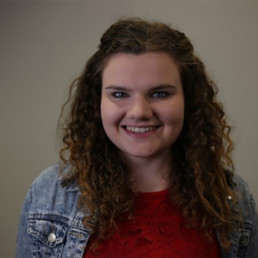
Written by Iona Jackson
Iona has 10 years of experience providing data, insights and research projects across several industries. Now heading up Edurio’s research team, comprising of education and survey specialists. Iona leads on turning Edurio’s national datasets into useful and impactful insights for trust and school leaders.
On June 21st, my colleagues and I hosted the Edurio EDI Summit, a day dedicated to promoting equality, diversity and inclusion within schools. Throughout the day we had guest speakers sharing their experiences in school as people with a range of protected characteristics, ran masterclass sessions with experts in equality, diversity and inclusion, and launched the first report from Edurio’s Equality, Diversity and Inclusion Review.
Among our guest speakers was Amy Ferguson, a female, lesbian, Black school leader, who explained her experiences at the intersection of multiple protected characteristics. We also heard from Abed Ahmed, a Muslim teacher with a stutter. We learned from Abed about the challenges of interviews when fluent speech is a challenge, and how the “usual” model of interviewing could be limiting the talent pool by assessing people on attributes that don’t dictate how well a person is able to teach young people.
The masterclass sessions covered topics from diversity to religion. Mandy Coalter encouraged attendees to understand the context using both individual stories and data when building action plans. We heard from David Hermitt about the changing role religion plays in the lives of White British/Irish children, and how that compares to their BAME peers. In another session, Jerrel Jackson talked about problems with labels, both the ones assigned to us by others and the ones we assign ourselves. We wrapped up the day with a close look at intersectionality, with Hannah Wilson (Diverse Educators) and Angie Browne. The session shone a light on the challenges that come from thinking about people based on one characteristic they may have, as humans are made up of a number of characteristics and experiences.
The event also featured the launch of our report, Equality, Diversity and Inclusion Among School Staff. It’s the first of many reports from our EDI Review, the largest dataset on EDI issues within English schools. 16,500 school staff took part from 380 schools in England, discussing their experiences relating to recruitment, on-the-job issues of equality, diversity and inclusion, and opportunities to advance within their school or trust. We found that, overall, staff felt that their workplace was committed to promoting equality, diversity and inclusion. Four in Five staff said they felt their workplace was ‘quite’ or ‘very committed’. However, there were material differences among how staff with certain protected characteristics experienced their time in schools.
The first report offers an overview of some key learnings across the Equality, Diversity and Inclusion Review. But it is just the start – in the coming weeks and months we’ll be sharing deep dives into particular protected characteristic groups, and looking into particular areas of the school experience in more detail. As our data set grows, our representation of smaller or more marginalised groups will continue to grow, and we will be able to provide a voice to people who have struggled to have their views heard. I’m excited about what is to come as we continue on this long journey towards creating equal, diverse, and inclusive workplaces in education.
—
Edurio is a survey platform for schools to quickly and easy gather feedback from staff, parents and pupils. Our EDI Review is one of a number of surveys created by Edurio in partnership with education researchers and practitioners. To find out more, or book a consultation, head to home.edurio.com
Why MeToo Matters in International Schools
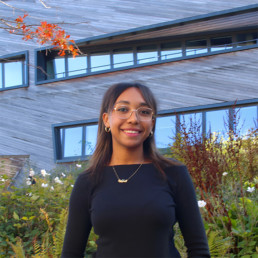
Written by Charlotte Rodney
As an undergraduate student currently pursuing my law degree at Durham University, I am an advocate passionate about Human Rights, hoping to propel into a career at the Bar. Public speaking, debating, and writing have always been passions of mine, placing conversation at the forefront of my passions. With a willingness to better understand intersectionality that is necessary but often lacking in educational institutions, I continue to pursue ventures that raise awareness on the topic of racial injustice. Writing for Durham's student publication, Palatinate, and immersing myself further into the legal field as a Durham University Women in Law Mentor, as well as being a mentee of a leading Professional Negligence barrister myself, I hope to always remain immersed in academic and working practicing fields.
Whether it be #metoo, #97percent, or even Sexual Assault Awareness Month, discussions about the female experience with assault and harassment have never been free from the demeaning scrutiny so forcefully placed on us by our male counterparts.
As an active feminist, I find myself liberated when initiating discussions about women’s rights, internalised misogyny, sexual assault, and much more. Having these discussions is never the issue. What is an increasing concern is how this is received by a lot of boys and men. Time and time again, we see them immediately become defensive, adamantly insisting that these issues have nothing to do with them, and often witnessing them taking away from our experience by imposing stories of their own – arguably very different – struggles.
In response to a recent surge in sexual assault awareness following Sarah Everard’s murder, the #notallmen campaign was started. Even though there are masses of credible statistics to be cited, including the recent United Nations publication which indicated that 97% of women in the UK, aged 18-24 have experienced some sort of sexual assault, men insist that it has nothing to do with them.
Sure, not all men, but enough men, and nearly all women.
Unfortunately, the education system is not innocent. It still has a lot to answer for regarding the often toxic environment that is created in schools, resulting in young girls who are indoctrinated with ideas of repression. Now, that may sound extremely dystopian, but it’s the reality for schoolgirls all over the world including myself. As a 17-year-old, close to finishing my schooling career, I have often found myself in situations where I invalidated my own feelings in order to appeal to the male authority figure. It begins with snide comments from male classmates, escalates to abuse of power from male staff members in order to impose their threatening views, and yet, it only ever seems to be addressed in a manner that results in eventual suppression of the female voice. In turn of progressive discussions being encouraged, we are told not to talk about such “subjective matters”. Instead of our experiences with harassment being listened to, we are silenced and told to “park it and move on” and “move on”. When all we really want is to be acknowledged and approached on how men can do their part to make the world more comfortable for us, we are argued with and told to prove that there truly is a systemic bias against us.
Schools are intended to be a nurturing environment in which students leave with formulated opinions, often influenced by the system. Thus, a considered approach needs to be implemented when addressing the reality of being a woman, and it starts with young female voices at the frontline. Girls need to be encouraged to speak up, supported by an environment that makes them feel safe to do so. Boys need to be taught how to approach such situations, with consideration, validation and knowledge. And the adults in positions of responsibility must mediate with comprehension and consideration; allowing personal viewpoints to be safely shared with the sole intent of educating.
I have grown up in a world that has engineered a system, teaching girls from a young age that their voice doesn’t matter. Having had an interest in leadership roles ever since I was young, I have not been free from the titles of ‘bossy’ or ‘too big for your boots’, reinforcing this idea that, as a girl, I couldn’t take on high-power roles without their being a negative connotation to it. Yet my male classmates could pursue any role they saw fit without so much as a second glance from those around.
The patriarchal lens in which the world views women put us under so much more scrutiny than our male counterparts. Unfortunately, this has created a toxic amount of competition which has turned women against each other. Having your gender be an identifying factor that frequently puts you at risk will never be the struggle of men. It’s time that we take the immensely progressive attitudes of the 21st century and use the surplus of information in the most productive way possible. Social media may be one of our greatest allies, providing a platform for avid discussion and spreading awareness. There is often a misconception that this abundance of information equates immediately to progress. While this isn’t the case, we are still at an advantageous point of being able to use our shared experiences for change. And I believe that is exactly what we need to do.
Five Steps For Starting A School Pride

Written by Edel Cronin
Secondary school senior leader and co founder of Bristol Queer Educators, very Queer and very Irish.
Yesterday my school held its first in-person Pride. The saying of – you can’t be it unless you can see it – very much worked in the reverse for me as I walked into our student Pride lunch club. The room was awash with students celebrating Pride in a rainbow of flags, cakes and community. I never consciously knew what I wasn’t ‘seeing’ during my teenage years but something about walking into a classroom full of Pride colour made me reflect on how my life may have been different had this experience happened in my school. No one was ‘risk assessing’ if it was safe to wear a flag or in some cases a crown! Everyone was fully embracing having a space to loudly celebrate themselves.
Creating a whole school event has not been high on the agenda of most school leaders in the last year and half. I think we have all had 1 or 2 other things taking up our time. However, I would argue that it is in a pandemic where the school year has been full of uncertainty, and at times isolation, we need events like Pride more than ever. Pride gives us an opportunity to remind ourselves and others that our sexuality or gender is something to celebrate.
- Ask for help – Our school’s first Pride took place in June 2020. I sent an email out to staff asking if anyone was interested in organising a virtual school Pride. Five or six staff volunteered, we set up a Teams’ call and got started. We chose to focus on 1 week, took a day each and made tutor resources for that day. You don’t have to do everything from scratch – lots of organisations have free resources and doing even one thing in your school for the first time will make a positive impact on the lives of LGBTQ+ students and staff.
- Make it intersectional – Each member of staff made a resource based on their own area of interest. The only expectation we agreed on was that all resources had to be intersectional. If all your resources are white, able-bodied people from the LG bit of LGBTQIA+ spend some time educating yourself and diversify your resources using organisations like Just Like Us. Your students and staff may fall into one ‘category’ but LGBTQ+ people do not.
- Ask for student input/feedback – If your in a position to ask for student in put in advance fantastic, if not don’t worry. For my initial attempt at school Pride I wasn’t, so instead we did what we would have wanted as students and asked for students feedback to help us plan for future events. Those who fed back also created the base of our student group for the following academic year and led to a whole school LGBT+ History Month the following February.
- Choose an ‘action’ for the month – Pride is celebration, it is also a chance for us to ensure the futures of LGBTQ+ people are less discriminatory. What would your school benefit from in Pride month but also every other month of the year? It could be putting a Pride flag up and keeping it up 24/7 or changing your behaviour policy. Depending on your setting one of these might be more achievable than the other. It is also important to consider student and staff feedback when deciding on your action.
- Share – Share what you’ve done. Many LGBTQ+ educators are the only LGBTQ+ educators in their school. A sense of community is not just important for our students but also ourselves.
Keep Chipping Away at Homophobia
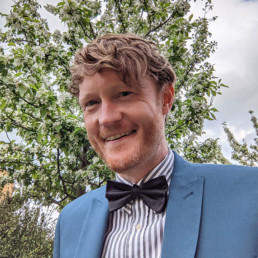
Written by David Lowbridge-Ellis
Leader of school improvement for Matrix Academy Trust in the West Midlands. In addition to writing extensively on equality and diversity he has been published widely on topics ranging from curriculum and assessment to workload and well-being.
You can’t be what you can’t see. It’s a phrase bordering on cliché. But just because something is clichéd that doesn’t make it any less true. It rings so true that, at this point, we should probably consider it conventional wisdom. And sometimes, it just takes a glimpse to start making change happen.
Friday night after a long week: my husband and I are on the sofa, watching a football match – of all things!
Now I don’t want to indulge in gay stereotypes but I’m not very into football. My husband is more keen, especially when it comes to an international competition. When the World Cup’s on, he goes gaga for it. It’s the whole ‘world coming together in harmony’ part that gets him going. He’ll also watch any match that Gerard Piqué happens to be playing in. My husband claims he’s a fan of Piqué by proxy: the Spanish footballer is married to Shakira, whose music my husband enjoys. But I know the truth.
Anyway…
The match we were watching was the England vs. Scotland match of the Euro 2020 (sic) competition. A pretty unremarkable feat of football as it turned out, with a 0-0 final score. What was arguably more significant was an advert from Nike played in the break. Calling it an advert is an understatement, although that was its purpose. The short film, entitled The Land of New Football, was a vision of how football could be. Starring Free School Meals-champion Marcus Rashford it might have been considered by some to be utopian, but nothing was outside the realm of possibility. It finishes with the ‘UK’s first hijab wearing referee’, a real person. And 20 seconds in it featured a gay footballer (Josh Day, of London Titans FC) celebrating a victory by kissing his partner on the pitch.
Let’s just pause (like I did, rewinding the brief footage seven times) and drink that in: millions of people just saw a gay footballer kissing his partner. There was no cutaway at the last minute. This wasn’t queer-baiting; we got the setup and the payoff. Yes, it only lasted a few seconds, but it was still around 400% longer than the lesbian kiss in the last Star Wars movie which was much heralded but was, ultimately, a crushing disappointment.
I know there are arguments that corporations are just jumping on the Pride bandwagon now it’s a commercially advantageous option. I get as frustrated at anyone about companies seeking out rainbow pounds/dollars/Euros without giving anything back to the LGBTQ+ community. But Nike has a better track record than most. Back in 2013, Nike actively sought gay athletes to be front and centre in their latest campaign. A little known fact is they also finance the queer-friendly animation studio Laika, famous for stop-motion movies Coraline, Paranorman and Kubo & The Two Strings (the studio head is the son of Nike’s co-founder).
One advert, no matter how well shot and well edited and well intended, is not going to change the world by itself. But things like this do chip away at the homophobia that sometimes seems like an immovable monolith, an ugly slab of uncut stone blocking out all the light, preventing mutual understanding from taking root.
When homophobia feels like this – and in my experience, it feels like this a lot of the time – we can get discouraged. We start to feel that it is an intractable problem: no matter what we do, we are just not going to shift it. But what I’ve learned over the years is this: anything you do, even if it’s chipping away, is enough to start something.
I’m reliably informed (thanks Wikipedia) that ‘chipping’ is also a term used in football for getting the ball where it needs to go by skilfully applying less than the usual force to the underside of the ball so it goes over opponents’ heads. Apparently, Lionel Messi (another of my husband’s reasons to watch certain matches) is very good at this.
A footballer chipping in a ball is, of course, very different to someone trying to shift a big rock by hacking away tiny bits of it. It’s closer to a skilful sculptor chipping away carefully at a mass of marble. Less force; more impact. It highlights to me that while more forceful approaches to tackling the problem of homophobia are sometimes required, they aren’t the only options. Sometimes, something more subtle can be effective.
It may ‘just’ be an assembly; it may ‘just’ be a PSHE lesson; it may ‘just’ be an interaction in a corridor with a pupil who is putting more effort into disguising their true selves than their school work.
But…
It may ‘just’ be enough to change that pupil’s life; it may ‘just’ be enough to change the outlook of several members of a class; it may ‘just’ sow the seed of something which will grow as children move through our schools, flowering into something approaching – or exceeding – mutual understanding.
It’s well known that there are several gay players in the Premier League. What did they feel when they saw that Nike film played during halftime? Did they look at it with shame, retreating further back into the closet? Did they look at it with envy, wishing that they could be that jubilant player on the screen, unafraid to celebrate in front of spectators with his significant other? Did they look at it with pride, knowing that they were represented?
Who knows how long it will take for a player in the Premier League to come out as gay. But when it does happen (and it will) I doubt they will be able to point to just one thing that led them to decide enough was enough and led them to take that very brave step. It will be the cumulative result of them chipping away at their own internal monoliths over several years, wearing away their fear about what others will think about them; whether they will still get sponsorship deals; if their dream career will turn its back on them.
When we ask our pupils about their dream careers, we may sometimes have to resist rolling our eyes. You want to earn a living as a footballer, riiiiiight. As it happens, I have taught several pupils who have made it as top-flight footballers, so I know it is possible. I would never have wanted any of those to see who they are as an impediment to pursuing those dreams.
Similarly, I would never want the critical mass of pupils who follow football to grow up thinking there is no place in the national sport for queer people. Or, for that matter, any occupational field. And that includes teaching.
I’ve been out as gay for over a decade and I never bother to hide this part of myself in front of my pupils. I find it startling to remember that I was the first out teacher at the school I currently spend most of my time in. I’m far from the only queer teacher at my school currently. I’d go so far to say we are well above national average as far as proportion of queer teachers goes. And the same goes across our multi-academy trust. I would never claim sole credit for this but we have trained queer people to be teachers who were former pupils of mine. And several of them have told me that knowing I was gay meant they didn’t close down the possibility of being a teacher themselves.
Football and education may not seem especially comparable (and I’m far more qualified to comment on the latter than the former), but they’re both fields where homosexuality has been less tolerated than in other social spheres. On most football pitches and school playing fields we’re still far away from having the differences in who we love being universally celebrated. And, yes, I do get VERY frustrated at the agonisingly slow pace of change! But I calm myself by recalling that even little things can have a big impact over time. Let’s keep chipping away.
Has Inclusion Had its Day as a Concept in Education?
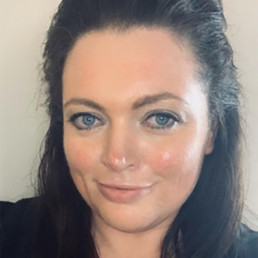
Written by Laura McConnell
Laura is a teacher, a writer, a keynote speaker, a radio presenter and a disability campaigner.
“Inclusion” has become one of the most inflammatory words in education, having evolved to be synonymous with behaviour, specifically undesirable behaviour. The most common themes in any inclusion discourse tend to be negative: underfunding, lack of resources, varying quality and/or availability of training, and lengthy waits to access health services being the most frequently referenced barriers to inclusion, no matter where you are in the UK.
SEND: ‘A grim picture’
We are still awaiting the eagerly anticipated SEND (special educational needs and disabilities) review in England, with publication pushed back to sometime later in 2021. The Scottish government published its review of additional support for learning (ASL) implementation in June 2020 – and anecdotal evidence suggests that the Scottish findings could be a good indicator of what is to come in the English SEND review. Unfortunately, the Scottish review paints a rather grim, but not unsurprising, picture, reporting that 98 percent of the education workforce feels that initial teacher training does not adequately prepare staff for teaching young people who have additional support needs (ASN). It says: “There is a lack of understanding, or recognition, of the range of issues and conditions which entitle children and young people to support.”
The review also found that there were mixed views about inclusion among teachers: “Unfortunately, we cannot assume and take for granted that all individual professionals are signed up to the principles of inclusion and the presumption of mainstreaming.” And that some teachers did not think ASN was part of their job: “Others have shared their core belief that their role should only be to teach children and young people capable of learning within traditional academic standards.”
Ahead of the SEND review’s publication, we do know that there is a disparity in the way that SEND is identified in English schools and/or the access children with SEND have to some schools in England. In a report published in March this year, the Education Policy Institute (EPI) found that pupils in academies were 50 per cent less likely to have SEND identified when compared to similar pupils in state schools.
Let down by language
Many disabled activists think it is the language of inclusion that is the problem. Inclusion emphasises that the child is not part of the group, they are an outsider who should be included. Including them requires something extra: staff, resources, training, intervention groups. Schools have to adapt their policies and practises for the child to fit in. What if the focus was on the school, rather than the child? If education was “accessible”, then it would be usable by everyone.
The Council of Ontario Universities explains accessible education as being based on the social model of disability, as opposed to the medical model: disability is a difference instead of a deficiency. It considers the variety of student characteristics and removes the barriers to learning before they can affect anyone. The curriculum or environment is designed to be used by all, as opposed to access being achieved through special accommodations and/or retrofitting the existing offer. It is evident from all research published so far that current approaches to inclusion are not working for children or teachers.
Rather than perpetuate a myth that there would be improvements if there were more staff, or if access to health services were faster, the education sector should move onwards towards a system of accessible education – where no child is an outsider.
You can watch Laura’s input at the #DiverseEd event here: https://youtu.be/hD8M6aMENxU
Finding Your Voice to Challenge Broken Systems
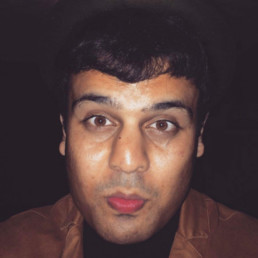
Written by Shuaib Khan
Shuaib is a teacher, sociologist, poet and podcaster.
On Saturday June 12th, I had the honour to join Hannah Wilson and Bennie Kara at the Diverse Educators forum for #DiverseEd. The theme I was focusing on was the notion of finding your voice.
After gathering my reflections and then almost losing my train of thought at the realisation one of my heroes, Dr Jill Berry was on the same panel as me, a really powerful conversation began to take place. The protected characteristics I wished to speak about were four-fold; being a British-Pakistani, Muslim educator. The journey that I have been on to reclaim a greater sense of self-pride in each element of my identity is still on-going. A lot of learning and unlearning comes with reflections. Ultimately, I am still on a journey.
After the introductions acknowledging the incredible educators that shared their experiences, the notion of what Nikesh Shukla refers to as the, “good immigrant” was my prominent theme. Before I began my journey, I believed firmly in the notion of being a “good immigrant” and the idea of assimilation and acceptance. Throughout my time at school and career as a teacher, as well as my lived experiences away from education, I was expected to “know my place.” There was always a tacit cultural tolerance that as a Muslim, and particularly as a Pakistani Muslim, raising my head too far above the parapet was frowned upon. Both society at large, and my own community seemed to foster this view. However, against the backdrop of the 2020 Black Lives Matter Movement, I began to realise that despite how much assimilation takes place and to whatever extent I suppressed by race, ethnicity or religion, the “good immigrant” was no longer the label for me.
Why suppress your own identity?
A lot of this is born out of fear. As noted, my identity is four-fold and if I add gender in there, possibly even five-fold. In public spaces I always felt the need to abbreviate my name. I was ‘SK’ to many and I never dared to correct someone for mispronouncing my name. The shame and even fragility of identity politics was ingrained into by society and its structures. When we do a Google search for British-Pakistanis, we are met with a barrage of crass stereotypes. The exact same can be said about Muslims and these derogatory views often made me feel ashamed of where I came from. The media played a huge role in all of this. Whenever a global event involving Muslims occurred, as a child I felt at fault and as an educator, in various establishments, I felt a real sense of shame. However, these are broken systems and this cognitive dissonance I was feeling needed to be challenged.
The turning point really began when I looked through photos of my late Grandfather. He was so fiercely proud of his Kashmiri roots but was unable to articulate his feelings in written to spoken word. Some 60 plus years since he arrived in this country, his vision of social mobility lives on through us. I found my voice to honour my grandfather. I found my voice to elevate the concerns of the community that I live and work in. Ultimately, with finding my voice has come the tremendous responsibility of occupying a platform to help others find their voice.
Hannah and Bennie enabled me to begin an important conversation. Many people out there are confused, disillusioned and apathetic about their identity. There is no magic wand approach. Yet, allowing others to speak on your behalf, without the lived experiences you have, this does your story no justice. For far too long I would wait my turn or relinquish my seat at the table because I felt like I had nothing worthy to say or offer. With organisations like DiverseED and Teacher Hug Radio amongst others, there is both a need and a desire for educators from all backgrounds to pull up a chair and begin to voice their concerns.
In summary #MyDiverseEdPledge was to carry on learning and unlearning and to carry on challenging broken systems. The systems the panellists spoke of; hetro-normativity, unconscious bias, racism and systemic silence, they all must be challenged. Thank you once again to Hannah and Bennie. Please join my journey and I also look forward to hearing all about yours.
You can watch Shuaib’s input at the #DiverseEd event here: https://youtu.be/wnanDncf6Xc

